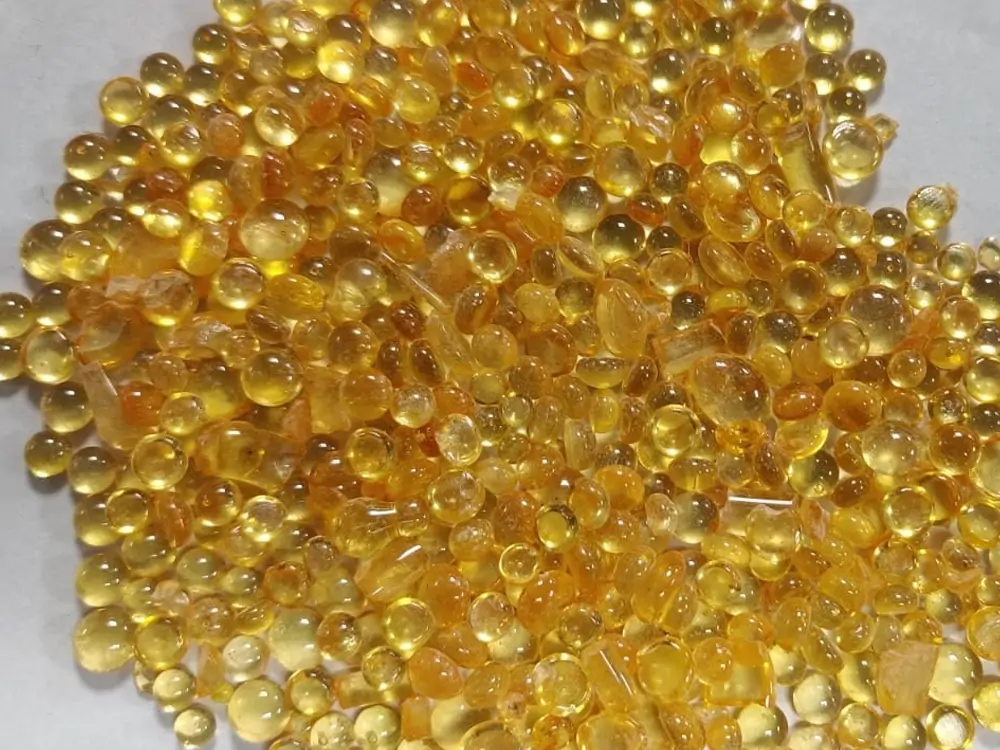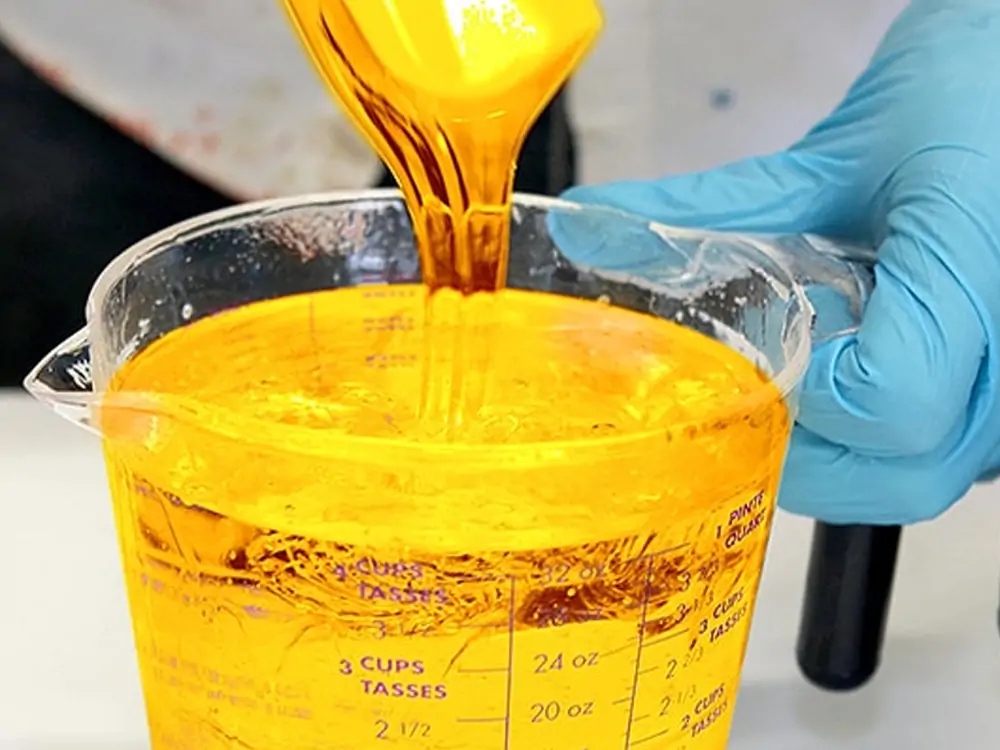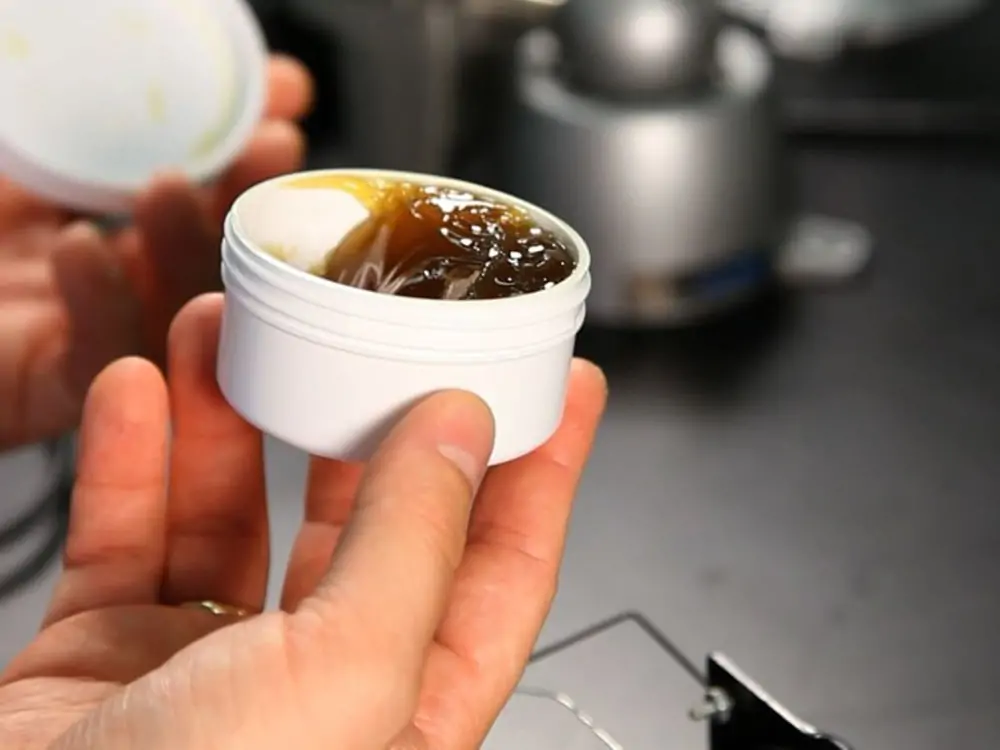Introduction
Explanation of Phenolic Resin
Phenolic resin is a type of synthetic thermosetting polymer. It is also called Phenolic Formaldehyde Resin. It is formed by reacting phenol and formaldehyde under optimum temperature and pressure. This process creates an enduring phenolic plate that is moldable into distinct shapes. It finds extensive use in various industrial applications.
In this article, we’ll discuss the importance, history, properties, manufacturing process, types, and environmental aspects of phenolic resin.
Importance of Phenolic Resin
Industries such as automotive, aerospace, construction, and electronics rely on it as a crucial material. Because it has fantastic mechanical, thermal, and electrical characteristics.
Phenolic resin laboratory furniture is preferred in various industries. Such as electronics, medical, chemical, ballistics, oil, and more.
This furniture is known for its chemical resistance, and ability to fight high temperatures.

History of Phenolic Resin
Invention
Leo Baekeland, a Belgian chemist, invented Phenolic resin in the early 20th century. He named this material “Bakelite”. While conducting experiments with formaldehyde and phenol, he discovered phenolic resin.
He found this synthetic resin fit for electrical insulation purposes. This durable material was moldable into various shapes. It became popular in industries like automotive, electrical, and consumer goods.
In the 1920s and 30s, the aviation industry started using phenolic resin. The aviation industry utilized it to produce aircraft panels and engine components.
Advancements
From its discovery by Baekeland in the early 20th century to its widespread use in modern industry. It has been crucial for technological and product advancement.
These advancements made it simpler and more cost-effective to manufacture. Due to this, the application of phenolic resin grew to encompass various consumer goods. Such as jewelry and kitchen appliances.
With continued research and development, it will likely continue to be an important material in various industries in the future.
Properties of Phenolic Resin
It has excellent mechanical, electrical, and thermal properties. These properties of phenolic resin can be broadly classified into two types: chemical and physical properties.
Chemical Properties
The chemical properties of the phenolic resin include:
- Its ability to resist chemicals and solvents makes it ideal for use in labs.
- This material can fight harsh chemicals without deteriorating. Thus, it is an ideal substance for use in industrial settings where contact with chemicals is frequent.
- Its fire-retardant properties make it an important material in the construction industry. For example insulation and wall panels.
- Water or humidity cannot damage the phenolic resin. This property makes it great for outdoor use in things like boats and airplanes.
- It is especially useful for the marine and aviation industries. Where it can withstand exposure to saltwater and extreme weather conditions.
- Phenolic resin lab furniture is very appropriate. It is used in clinical, biological, analytical, and chemical labs. It is an ideal product for labs because of its durability and non-reactive surfaces.

Physical Properties
The physical properties of the phenolic resin include:
- It has high strength, durability, and superior electrical insulation properties.
- Additionally, It is a stiff and rigid material. It can handle heavy burdens without bending or cracking.
- It has superior electrical insulation properties, making it perfect for use in electrical elements. Such as circuit boards and switches.
- It can withstand exposure to fire without burning. Thus, it aids in preventing the propagation of fire and shielding buildings from harm.
- Also, its high heat resistance enables it to endure temperatures up to 150°C without melting or deteriorating.
- It has excellent dimensional stability.
- Another physical property of phenolic resin is its resistance to moisture and humidity.
- We can further enhance its physical properties by using additives and fillers.
- For example, Adding glass fibers can enhance its solidity and immobility. While the addition of graphite can improve its thermal conductivity.
Manufacturing Process of Phenolic Resin
The manufacturing process of phenolic resin involves 3 steps. We discuss these steps one by one.
Step 1:Raw Materials
- The raw materials include phenol, formaldehyde, and a catalyst such as sodium hydroxide.
- Phenol originated from crude oil, while formaldehyde is synthesized using methanol.
Step 2: Synthesis Process
- The synthesis process of phenolic resin involves the reaction of phenol with formaldehyde in the presence of a catalyst.
- A batch reactor is typically used to carry out this process. Under specific conditions of temperature, pressure, and duration.
- This reaction produces a final product of liquid resin. We can further process it into various forms such as powder, granules, or liquid as our needs.
Step 3: Quality Control Measures
To ensure our desired specifications and uniform quality. We need to implement quality control measures for the final product. Quality control measures include:
- Testing the raw materials
- Monitoring the reaction conditions
- Testing the final product for properties such as viscosity, density, and curing time.
- Use of analytical methods like infrared spectroscopy and gas chromatography. Operators use these methods to monitor the reaction. And also ensure that they use appropriate proportions of phenol and formaldehyde.

Types of Phenolic Resin
Its synthesis into different types depends on the raw materials. It is a versatile polymer with this capability. Its most common resin types include Novolac, Resol, Cresol, Cardanol, and Furfuryl alcohol phenolic resin.
Novolac Phenolic Resin
The synthesis of Novolac involves using phenol and formaldehyde with an acid catalyst.It has a high degree of cross-linking. This property makes it suitable for use in adhesives, coatings, and molding compounds.
Resol Phenolic Resin
In the synthesis of resol, a higher ratio of formaldehyde to phenol is used compared to Novolac with an alkali catalyst. It has a lower degree of cross-linking. This property makes it more convenient for numerous applications. Such as laminates, insulation materials, and coatings.
Cresol Phenolic Resin
The synthesis of cresol involves using formaldehyde and cresols. Cresols are isomers of phenol. It has a high resistance to heat and chemicals. This character makes it fit for use in high-temperature applications. Such as coatings, adhesives, and insulation materials.
Cardanol Phenolic Resin
Cardanol resin is synthesized by using formaldehyde and cardanol. Cardanol is a byproduct of cashew nut processing. It has excellent adhesion properties. These properties make it suitable for use in adhesives, coatings, and molding compounds.
Furfuryl alcohol Phenolic Resin
The synthesis of furfuryl alcohol phenolic resin involves using formaldehyde and furfuryl alcohol. It is resistant to warmth and chemicals.
Applications of Phenolic Resin
It is a versatile polymer with a vast degree of applications. It has many common applications, including:
Adhesives and Binders
It possesses excellent bonding properties, heat resistance, and durability. These properties make it ideal as adhesives and binders. It is widely used in the manufacture of composite wood products. Including plywood and particleboard.
Laminates
It is commonly utilized in the production of high-pressure laminates. These laminates are used for countertops, tabletops, and electrical insulation. These laminates have exceptional resistance against chemicals, heat, and bruises.
Molded Products
It is a popular material for molded products. Electrical parts, automotive parts, and household things are some examples. Its versatility and durability make it flawless for molding into various shapes. The molding process involves heating the phenolic resin to a liquid state. Then pour it into a mold, where it solidifies and takes on the desired shape.
Coatings
It is resistant to heat, chemicals, and abrasion. Due to these abilities, it is used in coatings for industries. Such as construction, automotive, and aerospace. Moreover, It is also used in insulation materials, brake pads, and friction materials.
Pros and Cons of Phenolic Resin
It is a favored material with a vast scope of uses. Here are some of the pros and cons of using phenolic resin:
Pros:
- Offset printing ink: It is used in offset printing ink for industrial purposes due to its great properties.
- Good chemical resistance: It has resistance to many chemicals, including acids, bases, and solvents.
- Thermal insulation: It can tolerate dry heat and wet heat.
- Non-absorbent: It is resistant to humidity and water. Its non-absorbent surfaces make it perfect for wet labs and around water sinks etc.
- Easy to move: You can easily move phenolic products from one place to another because of their lightweight.
- Easy to clean: You can clean it simply by using mild soap and water. There is no need to use expensive cleaners.
- Epoxy Resin vs Phenolic resin: Phenolic countertops have more design flexibility than epoxy countertops. It also costs cheaper than epoxy resin.
Cons:
- Formaldehyde emissions: The production and use of phenolic resin can result in the emission of formaldehyde. As formaldehyde is a potential health hazard.
- Limited color options: Its color is usually brown or black, which may not be desirable for certain uses.
- Brittleness: Repeated hits or pressures can cause it to become brittle and susceptible to cracking.
- High cost: It is a relatively expensive material in some cases, which may limit its use in some applications.
Environmental Impact of Phenolic Resins
Here are some of the environmental impacts of phenolic resins due to their manufacturing approach and usage:
Health hazards:
- One of the main environmental concerns associated with them is the emission of formaldehyde.
- Formaldehyde is a known carcinogen. It can upset the eyes, lungs, throat, nose, and skin.
- In addition, some phenolic resins may contain toxic chemicals. Such as phenol and cresol, which can cause skin and eye irritation. Furthermore, respiratory problems, even liver and kidney damage caused by them.
Dispose and Recycling:
- Phenolic resins are not biodegradable. Improper disposal of these resins can cause pollution and environmental harm.
- The disposal and recycling of them can also pose environmental and health risks.
- Burning phenolic resins can release harmful gases and particles into the air.
- Disposing of them directly in landfills can also contaminate soil and groundwater.
- Recycling phenolic resins can also be challenging. Due to their durability and resistance to chemical breakdown. However, research is underway to develop new methods for recycling phenolic resins.
Regulatory measures:
- Authorities have implemented multiple regulations to reduce the environmental impact of phenolic resins.
- The EU’s REACH regulation targets risks related to chemicals, like phenolic resins. It aims to identify and control these risks during production and use.
- Operators involved in handling phenolic resins should receive training on safe handling practices. They should also wear personal protective kit, such as gloves, goggles, and respirators.
- In addition, companies are also taking steps to reduce their environmental impact. By adopting sustainable manufacturing practices and developing new eco-friendly materials.
Conclusion
Recap of Phenolic Resin
In conclusion, It is a versatile and widely used class of synthetic polymer with a long history of use. Phenolic resin has desirable belongings. These include remarkable chemical and heat resistance. It also has high durability and adhesion.
Phenolic resins have a variety of applications. Including adhesives, laminates, molded products, and coatings. While they offer many benefits, phenolic resins also have some drawbacks. Like potential health hazards and environmental impacts.
Final Thoughts
In summary, phenolic resins have a rich history and a bright future in various industries. However, it is important to take steps to mitigate any negative effects on human health and the environment.
